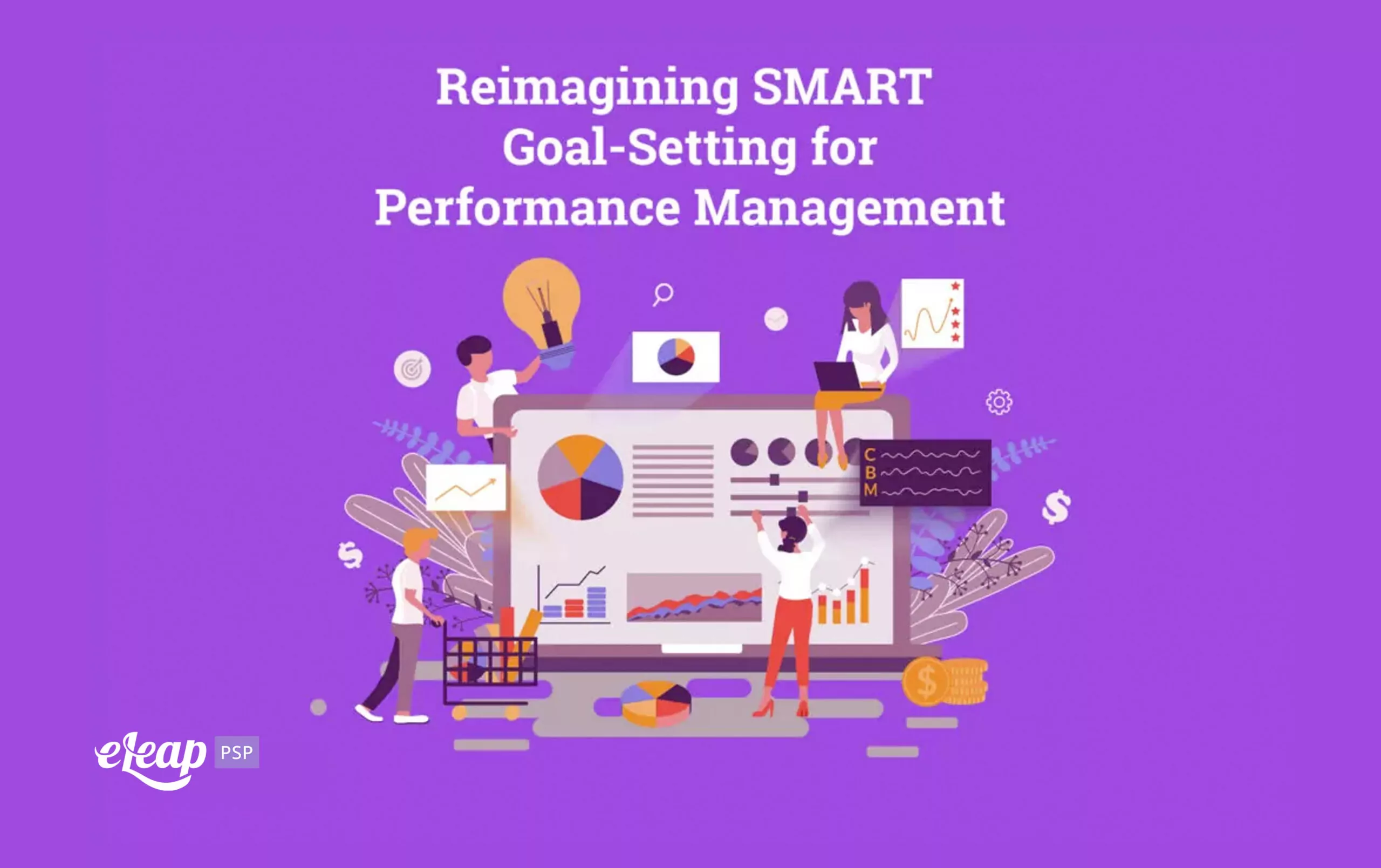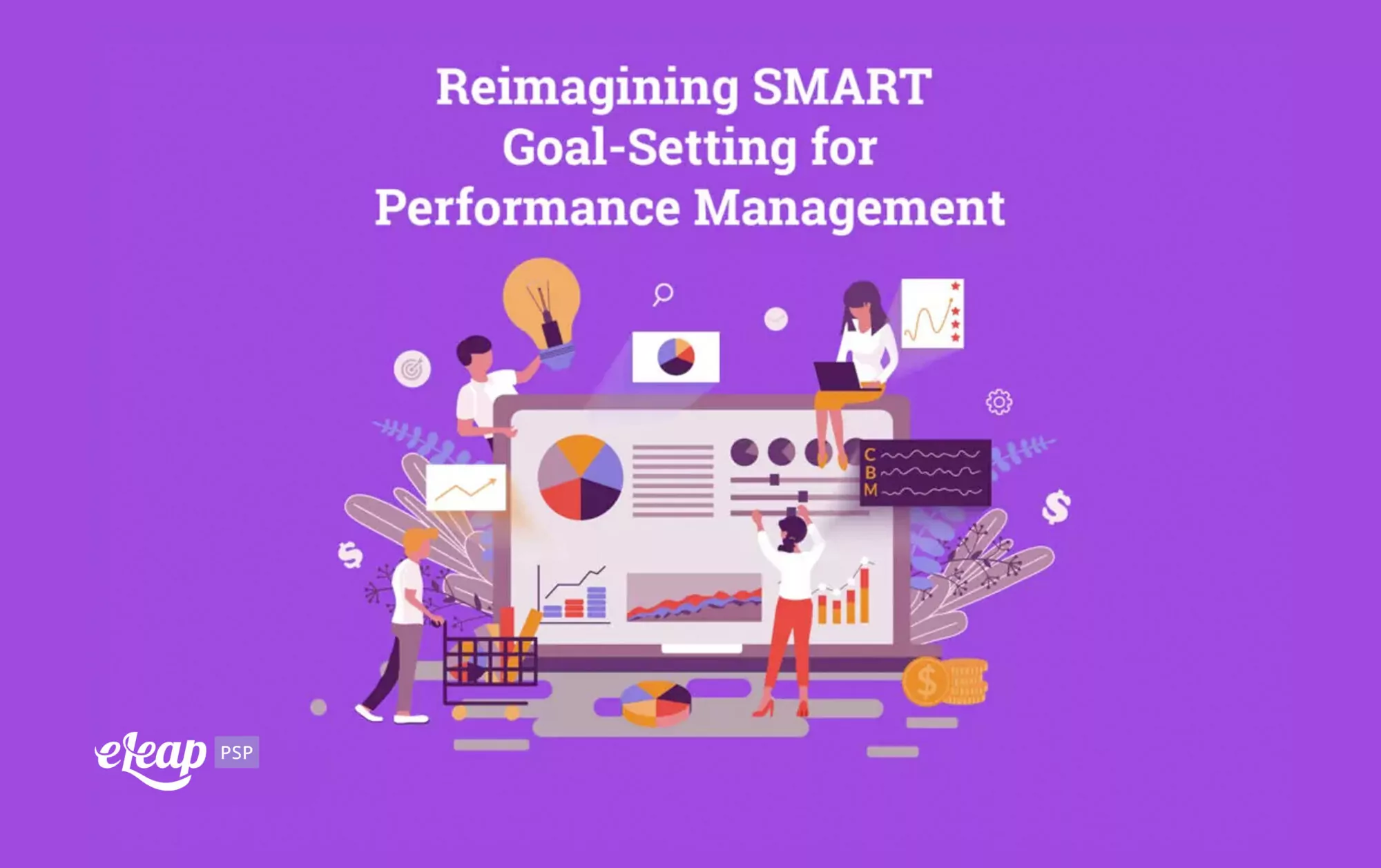Reimagining SMART Goal-Setting for Performance Management

Managing employee performance has never been easy. That’s clear from the fact that so many companies are abandoning the outmoded annual performance review model. Instead, they are moving to a more direct performance management model that allows them to provide actionable, relevant, timely feedback so that employees can make course corrections in real time. With that being said, management must still provide team members with a framework to follow for performance improvement, which can be challenging. Using the SMART goal-setting method can help.

What Is the SMART Methodology?
SMART is an acronym that stands for specific, measurable, achievable, relevant, and time-bound. This methodology has been used in a very wide range of fields, from business development to project management and finance. It can and should play a role in your performance management efforts, too. How, though?
Shift Your Mindset
Before we touch on using SMART goals, we need to explore how your performance management needs to change to use this method. If you’re still tied to the annual performance review method, it’s time to toss it out. Instead, you need to adopt a more agile, flexible approach that allows you to provide timely feedback that employees can use right now to change problem behaviors and reach goals.
If you do not change your underlying performance management method, it doesn’t matter what goal-setting system you use. All your efforts will be reactive. All feedback will be backward-facing. It will be impossible to deliver reviews that propel employees and the organization as a whole forward.
Instead of having reviews once or twice a year at best, implement them once per quarter or more frequently if you can. The more frequent the reviews, the more timely the feedback will be. Understand that an employee can’t take feedback on something that occurred 10 months ago and apply it to their behavior moving forward. However, by sitting down frequently and having conversations about things that occurred just days or weeks ago, it becomes possible to create a forward-facing strategy that fosters growth and success.
With that being said, no amount of timely feedback will do any good if you can’t set goals. You need to set clear, understandable goals that relate to the employee, their role on the team, and the team’s role in business success.
How to Use SMART Goal-Setting
The best way to use the SMART goal-setting method is to create statements of the important results you need to accomplish and to include both performance and development goals at the same time. Understand that performance relies on development and vice-versa. Everything is connected, and you must take a holistic view here.
S – Specific
What do you want the employee to accomplish? What actions should be taken to reach the goal? Understand that nebulous goals like “improve performance” won’t fly here. You need to be as specific as possible. For instance, “increase team output by 2%”.
M – Measurable
What will you use to measure progress toward the goal? How will you know when the employee has reached the goal? What information will be used to determine how well the employee performed in pursuing this goal? Measurement criteria must be spelled out at the time the goals are set; otherwise, you’re creating a moving target that cannot be hit.
A – Achievable
Is the goal reachable? Is it something that the employee is equipped to achieve? If not, what training or preparation can the organization provide to help ensure that they are prepared? What resources are necessary to reach the goal? Are those resources readily available?
R – Relevant
Why does the goal matter? How does it tie into the employee’s role on the team? How does it tie into the team’s role in the department? How does the goal support business objectives? Why is the result of an action important in the end? Illustrate the importance of the goal and why it matters, but also how it’s relevant to the employee and how their efforts are relevant to the business.
T – Time-Bound
When must the goal be reached? Why then? What is the relevance of the deadline? An open-ended goal might sound good, but it doesn’t provide any sense of urgency, and some employees may procrastinate because of that or may assume that without a deadline, the goal is unimportant. However, arbitrary deadlines that don’t provide sufficient time to accomplish the goal correctly also do more harm than good.
A simple way to sum up the entire situation is to turn everything into a single statement that looks like this:
Do ____ in order to achieve ____ by _____. Each of those blanks accounts for several of the letters in the SMART acronym.
What about Development Goals?
The discussion above centered primarily on performance goals – those that are related to an employee’s role within the organization and doing their job better. However, what about professional development goals? Those can also be supported by the SMART method.
You will need to map out the training that the employee needs for their position, but also any training that might support them in the future, including tying into their personal interests and strengths. Then, create SMART goals that speak to the specificity, measurability, achievability, relevance, and time-bound nature of each goal.
Maintaining Flexibility
Don’t get so tied to SMART goals that you fail to allow for flexibility. Plans change. Needs evolve. Employee responsibilities shift.
Ensure that your planning (not necessarily the goals themselves) remains flexible. One key to this is to use frequent check-ins and conversations with employees rather than following an annual review format. It’s all about being able to make course corrections and changes in real time rather than realizing in hindsight that something needed to be addressed but was not.
Building a Successful Team
With the information we’ve discussed here, you should be able to create SMART goals that help support business success, team development, and individual employee performance. Be flexible and remain committed to performance management but also to professional development and ongoing learning.